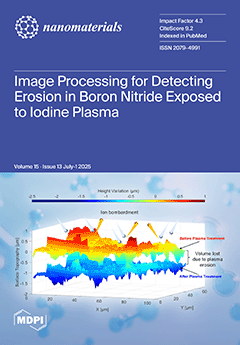Propylene production through the CO
2-assisted oxidative dehydrogenation of propane (CO
2-ODP) is an effective route able to address the ever-increasing demand for propylene and simultaneously utilize CO
2. In this study, a series of alumina-supported gallium oxide catalysts of
[...] Read more.
Propylene production through the CO
2-assisted oxidative dehydrogenation of propane (CO
2-ODP) is an effective route able to address the ever-increasing demand for propylene and simultaneously utilize CO
2. In this study, a series of alumina-supported gallium oxide catalysts of variable Ga
2O
3 loading was synthesized, characterized, and evaluated with respect to their activity for the CO
2-ODP reaction. It was found that both the catalysts’ physicochemical characteristics and performance were strongly affected by the amount of Ga
2O
3 dispersed on Al
2O
3. Surface basicity was maximized for the sample containing 20 wt.% Ga
2O
3, whereas surface acidity was monotonically increased with increasing Ga
2O
3 loading. A volcano-type correlation was found between catalytic performance and acid/base properties, according to which propane conversion and propylene yield exhibited optimum values for intermediate surface basicity and acidity, which both correspond to the sample containing 30 wt.% Ga
2O
3. The dispersion of a suitable amount of Ga
2O
3 on the Al
2O
3 surface not only enhances the conversion of propane to propylene but also suppresses the formation of side products (C
2H
4, CH
4, and C
2H
6) at temperatures of practical interest. The 30%Ga
2O
3-Al
2O
3 catalyst exhibited very good stability at 550 °C, where byproduct formation and carbon deposition were limited. Mechanistic studies indicated that the reaction proceeds through a two-step oxidative route with the participation of CO
2 in the abstraction of H
2, originating from propane dehydrogenation, through the reverse water–gas reaction (RWGS) reaction, shifting the thermodynamic equilibrium towards propylene generation.
Full article






